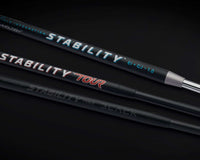At the age of 50, you would never think that Mickelson might be in top 5 for driving distance at Kiawah's Ocean course. Not only that, he would be in the top 5 in strokes-gained for approach, scrambling & putts within 15ft.
This is how Phil changed his outlook towards the game...
Distance
Some people think that Bryson DeChambeau is the mad-scientist of the PGA Tour, but when you get down to it, there’s another PGA Tour pro who is also focused on the technical aspects of the sport. That’s Phil Mickelson.
Mickelson turns 51 in June, and while he’s undecided which Tour he will play after that big birthday, he does know that he can’t be competitive on the PGA Tour without the ability to hit the ball a long way. Distance translates backward to several other factors, but mainly clubhead speed and the appropriate ball for the driver being used.
“There is a point, in my opinion, of diminishing return at about 182 mile an hour ball speed, which is going to equate to about 122 mile an hour clubhead speed,” he said to media at the AT&T National Pro-Am .
To solve the problem of gaining distance, Mickelson turned to the Superspeed training system. An easy to follow system, he would go on to gain almost 5mph. From struggling to get to 300, he would start flying bunkers at 315 yards with ease. Power helps you from every part of the golf course. You can "bomb it" off the tee, or get more height on your shots from the fairway.
It's a simple fact, distance makes golf easier & fun.
Club-Fitting
Phil Mickelson has always experimented club setups through out the years. For example back during the 2013 Open Championship, he chose to keep the driver out of the bag & went for a stronger lofted 3W at 13°. Working with the clubfitters at Callaway, they would eventually settle down on a stable platform which is the Ventus VeloCore Black for his driver, 2W & the Ventus Blue for the 4W.
The Fujikura Ventus Black – the low launch/low spin option of the Ventus family. Between the VeloCore technology and firmer tip section, the Ventus Black certainly delivers on its goal to significantly tighten dispersion and add distance to off-center hits.

The Fujikura Ventus Black does a good job of feeling firm and stable without feeling dead and boardy. A lot of shafts in the low/low family (not all!) are known for lacking load or kick due to their stout profiles. The Ventus Black, however, does a pretty good job managing this struggle. You definitely feel that the tip is very firm but the response is still precise and you can feel the shaft kick plenty. Don’t get me wrong, this shaft is very stable (more on that in a bit), but you can feel a good energy transfer with some pop at impact. The idea is that this stronger material stabilizes the head for more control at impact. This in theory should make you more consistent and your margin of error much smaller for better dispersion.
Technology-driven Practice
If you watch the players on the range (shown on TV sometimes), you would notice that 99% of them practice with a launch monitor. The instant feedback helps them dial-in their feel. This could be before a round or for general practice. People assume that Launch Monitors are only for professionals or club-fitters, but the fact is that the benefits far out weigh the costs. Mickelson is seen practicing with the Foresight GCQuad as well as the TrackMan4 on a regular basis. Such focused practice on a regular basis can only help. 
Yes, we understand purchasing such devices is an expensive affair. Pick up a PRGR Launch monitor instead for 1/100th of the cost. 94% as accurate as a TrackMan, it tracks clubhead speed, smash factor, ball speed & distance. Perfect for indoor & outdoor practice. Take it out on the range or even the course!



